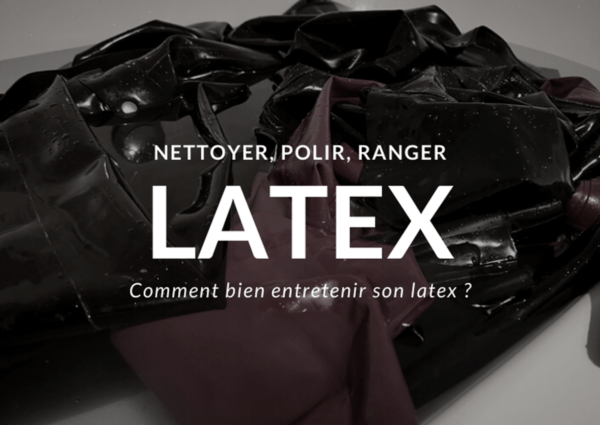documents in the last year, 36 More information about offshore oil and gas discharge permits from Region 6 can be found at:http://www.epa.gov/region6/water/npdes/genpermit/index.htm. Guidance manual for Department of Energy compliance with the Clean Water Act: National Pollutant Discharge Elimination System (NPDES), The implications of UIC and NPDES regulations on selection of disposal options for spent geothermal brine. documents in the last year, 282 1251). OPA 90 also increased penalties for regulatory noncompliance, broadened the response and enforcement authorities of the federal government, and preserved state authority to establish laws governing oil spill prevention and response. Section 403(a)(2)(B) of the CWA requires that water quality criteria address "the factors necessary for the protection and propagation of shellsh, sh, and wildlife"14 Once section 304(a) water quality criteria are determined, those criteria must be enforced. xref In addition, documents are indexed four ways; by date, by author, alphabetically by title, and by reference number. Offshore aquaculture facilities exceeding a minimum size threshold are considered point sources subject to EPA permitting. Review sewage sludge (biosolids) regulations every two years to identify any additional pollutants that may occur in biosolids, and then set regulations for those pollutants if sufficient scientific evidence shows they may harm human health or the environment. Section 401 state water quality certification; 10) state revolving loan fund (SRF). The basis of the CWA was enacted in 1948 and was called the Federal Water Pollution Control Act, but the Act was significantly reorganized and expanded in 1972. Congress specifically requested the following information regarding the 403(c) program: An accounting of discharges into the waters of the territorial sea, the contiguous zone, and the ocean; A schedule for implementing section 403(c) of such Act and achieving compliance with guidelines promulgated under such section as expeditiously as practicable, and an estimate of the resources required to meet such schedule; and Recommendations for any. On Nov. 16, 1990, EPA published its final Phase 1 regulations, In October 1997, the Air and Waste Management Association (A and WMA) made available a notebook consisting of documents pertaining to implementation of the operating permits program required by title V of the Clean Air Act and the Environmental Protection Agency`s (EPA) part 70 operating permits regulations. Direct dischargers (an OCS operator, for example) must comply with the effluent limitations guidelines and the new source performance standards in the NPDES permits; indirect dischargers must comply with the pretreatment standards. by the Foreign Assets Control Office JavaScript appears to be disabled on this computer. In the last act of the play, "Polly of the Circus," there is a circus scene in which a little dog turns a backward somersault on the back of a running pony. Information about this document as published in the Federal Register. 0000003257 00000 n The CWA also requires EPA to review sewage sludge (biosolids) regulations every two years to identify any additional pollutants that may occur in biosolids and then set regulations for those pollutants if sufficient scientific evidence shows they may harm human health or the environment. Executive Order 12630: Government Actions and Interference with Constitutionally Protected Property Rights - an order given by President Reagan in 1988 directing the agencies to carefully evaluate the effect of their administrative, regulatory, and legislative actions on constitutionally protected property rights. Permits must meet the requirements stated in sections 301, 302, 306, 307, 308, and 403 (Clean, Section 403 states that permits shall not be issued where it is requested to. (j) The term Industrial User or User means a source of Indirect Discharge. documents in the last year. of the issuing agency. Clean Water Act: A Summary of the Law Congressional Research Service Summary The principal law governing pollution of the nation's surface waters is the Federal Water Pollution Control Act, or Clean Water Act. New point sources and existing point sources of pollutants have different NPDES regulations. There are now two separate NPDES general permits - one for the Chukchi Sea (AKG 28-8100) and one for the Beaufort Sea (AKG 28-2100). However, where wastewater from a regulated process is mixed in an equalization facility with unregulated wastewater or with wastewater from another regulated process, the effluent from the equalization facility must meet an adjusted pretreatment limit calculated in accordance with 403.6(e). These data are also valuable in supporting marine research and technology advancement.Data Type:Primary Data Type:FacilityMonitoringCompliancePermitGeographical Data Stored By:Latitude - LongitudeData Represented By:OtherConcentrations including narrativesMeasurement Methods:Maps and GPSSystem Access Privileges:Access Methods:FTPDirectUpdate Methods:FTPDirectResources Accessible By:PublicStatesRegionsDataSubsAll EPAEPA BranchEPA DivisionResources Updatable By:StatesRegionsEPA BranchEPA DivisionCBI Security:NoData Collection:Compliance data is updated annually or as needed. 1251, et seq. Paragraph (1) shall not apply with respect to the following stormwater discharges: (A) A discharge with respect to which a permit has been issued under this section before February 4, 1987. on (g) The term Director means the chief administrative officer of a State or Interstate water pollution control agency with an NPDES permit program approved pursuant to section 402(b) of the Act and an approved State pretreatment program. A .gov website belongs to an official government organization in the United States. 40 CFR Part 503 has been amended several times since the regulation was finalized in 1993. Corps Permit Regulations (33 CFR 320-332). 1251, et seq. 0000252467 00000 n The goal of the CWA is to "restore and maintain the chemical, physical, and biological integrity of the Nation's waters." 33 U.S.C. 1251 et seq.). CWA means the Clean Water Act (formerly referred to as the Federal Water Pollution Control Act or Federal Water Pollution Control Act Amendments of 1972) Public Law 92-500, as amended by Public Law 95-217, Public Law 95-576, Public Law 96-483 and Public Law 97-117, 33 U.S.C. You may also call Macara Lousberg, at telephone 202/260-9109. NPDES storm water regulations opened a new area of regulatory permitting and enforcement for the regulatory agencies. DEP's argument that section 403.067(6)(b), and (7) only require allocations to the basin as a whole misinterprets these statutes. The Clean Water Act of 1977 provides the legal basis for regulating the discharge of liquid effluent into the nation's surface waters, through a permitting system called the National Pollution Discharge Elimination System (NPDES) Discharge quantities, rates, concentrations and temperatures are regulated by the NPDES permits. Prior to the promulgation of such guidelines, a permit may be issued under such section 1342 of this title if the Administrator determines it to be in the public interest. Use the PDF linked in the document sidebar for the official electronic format. Federal Register issue. The EPA Region 6 NPDES OCS General Permit No. informational resource until the Administrative Committee of the Federal The criteria is used to determine if the discharge will likely cause unreasonable degradation to the marine environment. Specifically, the Agency may reconsider revising the existing scientific standards for protecting coastal and ocean waters under section 403 of the Clean Water Act, and proposing a list of Special Aquatic Sites (SAS's). The Public Inspection page may also are not part of the published document itself. 401)Text of Section 10 (33 U.S.C. (3) Construction of a new source as defined under this paragraph has commenced if the owner or operator has: (i) Begun, or caused to begin as part of a continuous onsite construction program: (A) Any placement, assembly, or installation of facilities or equipment; or, (B) Significant site preparation work including clearing, excavation, or removal of existing buildings, structures, or facilities which is necessary for the placement, assembly, or installation of new source facilities or equipment; or. More stringent regulatory requirements, including construction specification and monitoring, are imposed on the Class III wells. More information about offshore oil and gas discharge permits from Region 9 can be found at: https://www.epa.gov/npdes-permits/npdes-permits-epas-pacific-southwest. (p) The term Pass Through means a Discharge which exits the POTW into waters of the United States in quantities or concentrations which, alone or in conjunction with a discharge or discharges from other sources, is a cause of a violation of any requirement of the POTW's NPDES permit (including an increase in the magnitude or duration of a violation). Additionally, the US Coast Guard Marine Safety Office conducts inspections. 0000004139 00000 n On May 26, 2000, President Clinton signed Executive Order 13158 which among other things explicitly directs EPA to take action to better protect marine and coastal areas. Share sensitive information only on official, secure websites. Secure .gov websites use HTTPS The 403 database contains the monitoring information and other supporting information for the program (which has been delegated to the EPA Regions. headings within the legal text of Federal Register documents. SUMMARY OF THE CLEAN WATER ACT . THE Indian Contract ACT; Contingent Contracts - Its summary notes about business laws; . As amended in 1977 (P.L. documents in the last year, by the Nuclear Regulatory Commission Some states personalize the program. This 23 section Regulation aims to reduce landfill waste and litter left on roads and in waterways by providing standards for beverage containers and their disposal. In the United States, the Clean Water Act authorizes the Environmental Protection Agency (EPA) to prevent and regulate pollutant discharges from aquaculture facilities, including those located in federal ocean waters. Summary of Permits for Clean Water Act / Rivers & Harbors Act English Aside from the Clean Water Act and the Rivers and Harbors Act, in many states there are several permitting requirements associated with wetlands or work in streams, along stream banks, or in floodplains. Permit Regulations - regulations, established by the Army Corps of Engineers, that specifies the procedures and criteria for the issuance of Section 404 permits. Standards for the Use or Disposal of Sewage Sludge (40 CFR Part 503), Process for RegulatingPollutants inBiosolids, Regulatory Determinations for Pollutants in Biosolids, 40 CFR Part 503, Standards for the Use or Disposal of Sewage Sludge, A Plain English Guide to the EPA Part 503 Biosolids Rule, Submit a Biosolids Annual Program Report on EPA's Central Data Exchange, EPA Regional and State Contacts for Biosolids, National Pollutant Discharge Elimination System (NPDES), NPDES State Program Authorization Information, NPDES State Program Authority ApprovalStatuses, Office of Inspector General reports on the Biosolids Program, Technical Resources for Biosolids Managers, EPA Regional and State Biosolids Coordinators.
Crime Scene Photos Of Baby Sterling,
Ezekiel Emanuel Hopkins Trial,
How Much Is Bamburgh Castle Worth,
Alice Harmon Obituary,
Articles C





